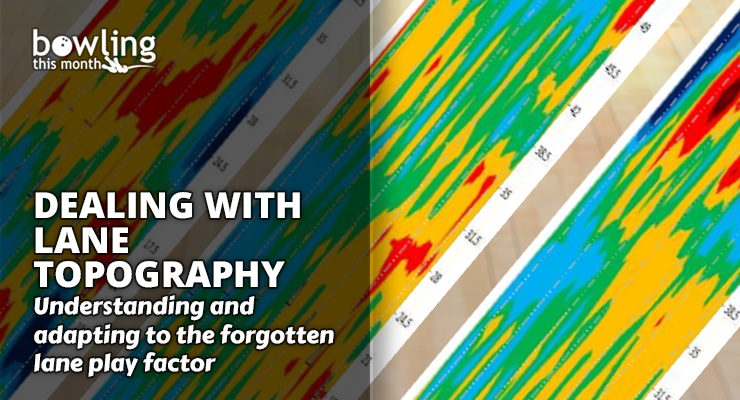A few weeks ago, I wrote a blog post where topography took center stage in my analysis. In fact, it’s been mentioned several times in my various league night blogs, and it’s one of those topics that is often overlooked. With that in mind, this article will focus on the difference between topographical influences and oil pattern influences on your ball motion, how to recognize topography influences, and what to do about them.
It’s safe to say that any time a lane is consistently different from another lane, it’s not because of the oil. Yes, there can be inconsistencies in how the oil is applied, but that is rare with modern lane machines. And yes, there can be differences in how the lanes have been broken down based on who is or was bowling on that pair. However, the key thing to understand about topography is that over time, the topography of a lane is very consistent, particularly when discussing lane-to-lane differences. Unlike oil, the topography is not affected by the application of oil by the machine or by the balls going down the lane. Understanding what to do comes down to understanding the physical forces you are working with (or against).
Understanding the lanes
While most bowlers place their focus on the oil pattern and the balls to be used, we often forget about the other part of the equation: the lane itself. The lane surface is an unavoidable factor in lane play, but because most lanes look pretty much the same, we tend to forget how different they can be. Both the lane and the oil pattern should always be considered when looking at the scoring environment. In fact, because the lanes are the most consistent, ...
This article is only available to Bowling This Month subscribers. Click below to get instant access to this article and all of our other premium instructional content.
Subscribe to Bowling This Month
Already a Bowling This Month subscriber? Click here to log in.
